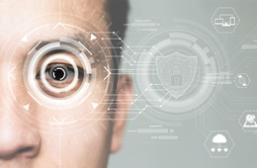

Biometrics Opens Up New Possibilities for the Security Industry
Julio Pérez Carreño is the Coordinator of the Electronic Security Area and Secretary of the Board of AES, the Spanish Association of Security Companies. In this interview, he explains how new biometric recognition technologies coupled with artificial intelligence, applied to access control (or presence monitoring) and video surveillance systems, will allow for more agile monitoring and automated system interfaces and avoid the need for architectural barriers in access control.
The Spanish Association of Security Companies (AES) sees the use of biometrics in private security as “a technology tool that we can’t fail to take advantage of,” according to Julio Pérez Carreño, Coordinator of the Electronic Security Area and Secretary of the AES Board.
Pérez Carreño explains that “biometrics can make identification an automated process of recognising a particular individual in a group.” And he notes that “the ISO 2382-37 standard defines automatic recognition of individuals based on their biological and behavioural characteristics.”
They enable access control systems to ensure authorised access not to the person presenting an accreditation or having a key or knowing a password but to the individual authorised. “That means moving from presumption to certainty because it identifies the person by their biometric features.”
He points out that “in private security and security in general, this certainty is essential in many cases. With the advances in biometric recognition technologies, we can also prove identity more reliably (far fewer reading errors), with greater security (because they even certify that the bearer is alive, making possible attempts at impersonation more difficult) and with greater privacy (because their very nature means that there’s no password to lose or reconstruct).”
Similarly, the non-indiscriminate consensual use of video surveillance systems in specific environments, using facial biometrics, “can greatly improve site security without the physical barriers that are part of alternative security systems.” In any case, “it’s essential to distinguish different use cases and technologies, to comply with legislation and avoid violating fundamental rights when handling personal data like images.”
More Efficient Management
In this context, Julio Pérez Carreño stresses that “new biometric recognition technologies coupled with artificial intelligence, applied to access control or presence monitoring and video surveillance systems, will allow for more agile monitoring and automated system interfaces, as well as removing the need for architectural barriers in access control.”
And he adds that “by integrating it with other subsystems, such as temperature and capacity control or traffic management, we can manage private security more efficiently.”





